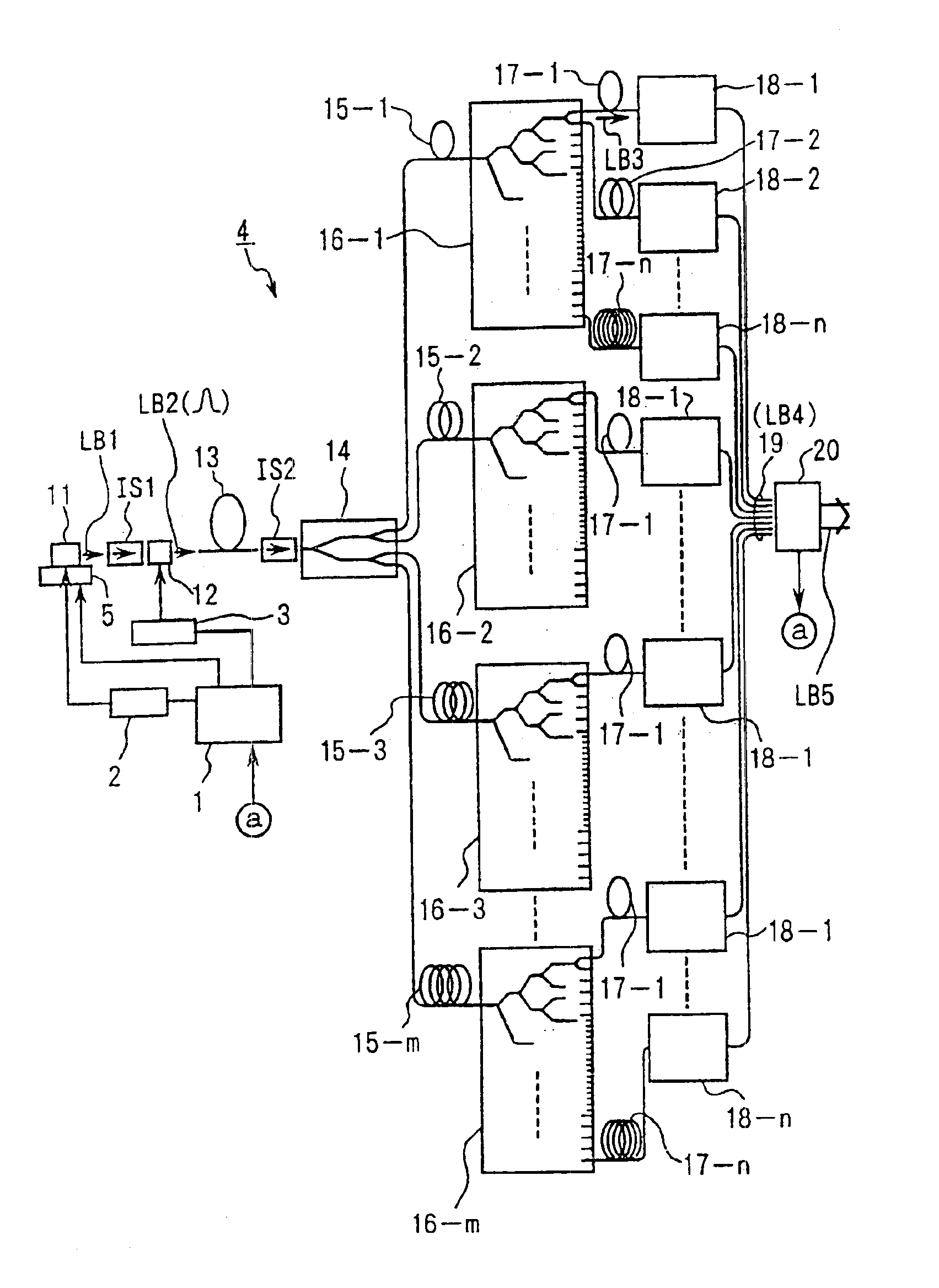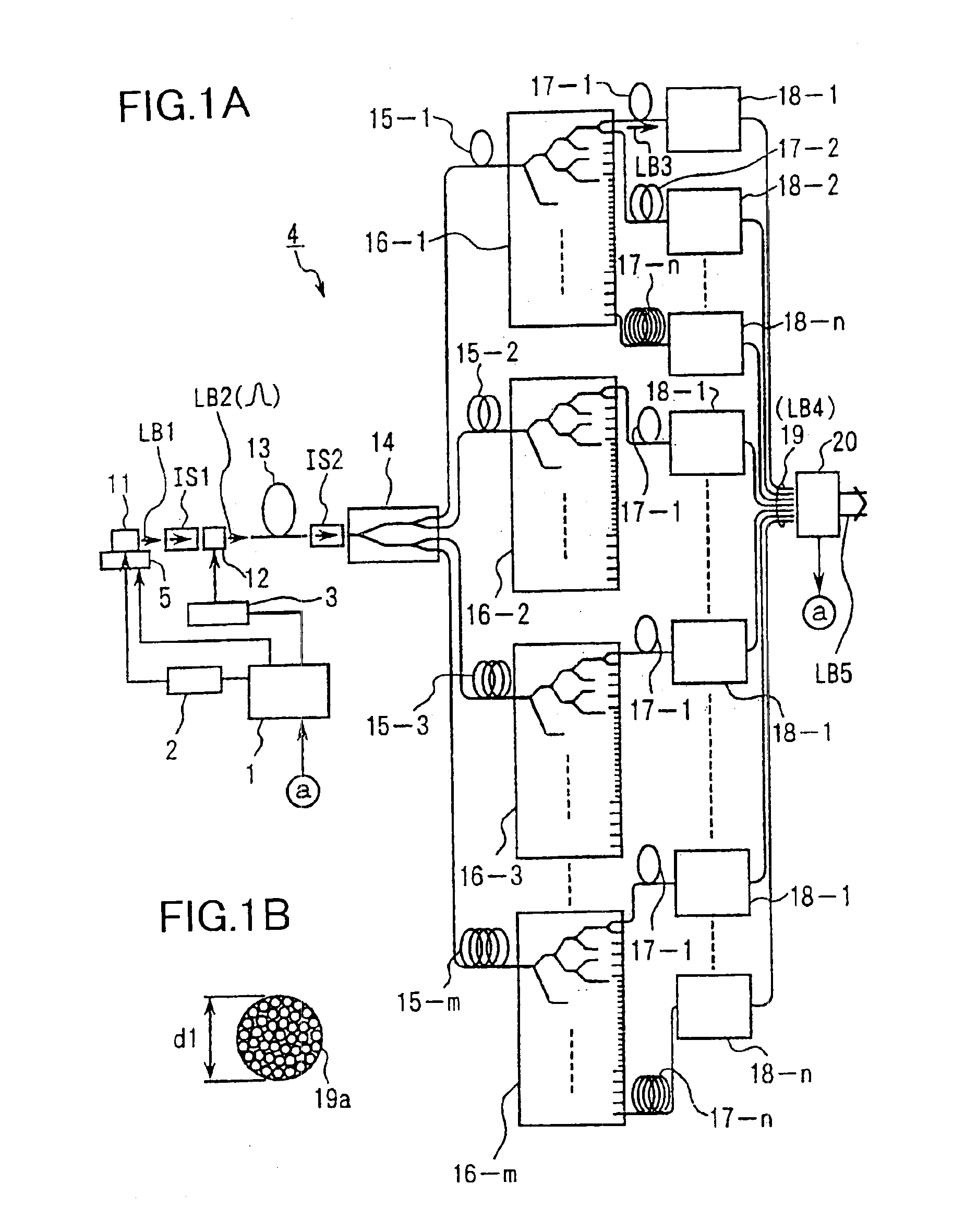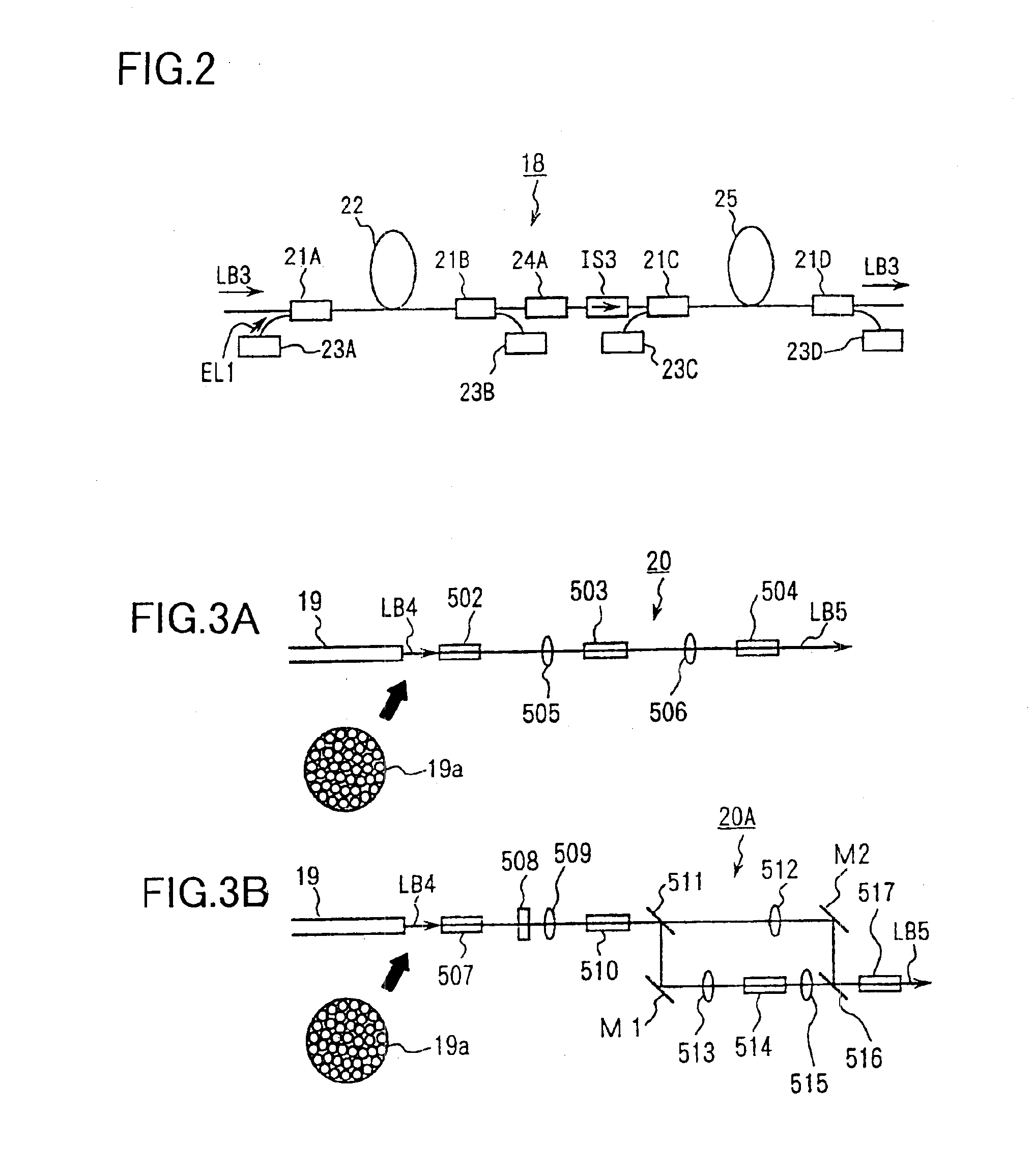Exposure apparatus with laser device
- Summary
- Abstract
- Description
- Claims
- Application Information
AI Technical Summary
Benefits of technology
Problems solved by technology
Method used
Image
Examples
first embodiment
[0054]Hereinbelow, a preferred first embodiment according to the present invention will be described with reference to the accompanying drawings. The present embodiment represents a configuration in which the present invention is applied to an ultraviolet light generator that can be used as an ultraviolet-region exposure light source of a projection exposure apparatus such as a stepper method or a step-and-scan method or as a light source for alignment and various tests.
[0055]FIG. 1A shows an ultraviolet light generator according to the present embodiment. Referring to FIG. 1A, a single wavelength oscillatory laser 11, which is provided as a laser light generation section, generates a laser beam LB1 that is formed of, for example, a continuous wave (CW) having a narrow spectral width and that has a wavelength of 1.544 μm. The laser beam LB1 is incident on an optical modulating device 12, which is provided as an optical modulator, via an isolator IS1 provided for blocking reverse lig...
second embodiment
[0124]Hereinbelow, the present invention will be described with reference to FIGS. 7 to 9. The present embodiment is different from the embodiment shown in FIG. 1A in portions of the configurations from the single wavelength oscillatory laser 11 to the optical fiber amplifier 13. A description will therefore be made regarding the different portions.
[0125]FIG. 7 shows essential portions of the present embodiment. Referring to FIG. 7, a laser beam LB1 having a wavelength of 1.544 μm (which hereinbelow will be represented by λ1) that has been output from the single wavelength oscillatory laser 11 is incident on a wavelength division multiplexing device (WDM device) 52 through an optical fiber 53A. A laser beam LBR having a wavelength λ2, which is different from the laser beam having the wavelength λ1 that has been output from a semiconductor laser 51 provided as an auxiliary light source, is incident on the WDM device 52 through an optical fiber 53B. A laser beam formed of the laser be...
third embodiment
[0131]Hereinbelow, the present invention will be described with reference to FIG. 10. Also the present embodiment is different from the embodiment shown in FIG. 1A in portions of the configurations from the single wavelength oscillatory laser 11 to the optical fiber amplifier 13. A description will therefore be made regarding the different portions.
[0132]FIG. 10 shows essential portions of the present embodiment. Referring to FIG. 10, a laser beam LB1 (which is assumed to be linear polarization light) having a wavelength of 1.544 μm that has been output from the single wavelength oscillatory laser 11 is incident on a polarized-wave combining device 55 for coaxially combining two light beams of different polarized states, and a laser beam LBP is incident on the polarized-wave combining device 55. The laser beam LBP has a wavelength of 1.544 μm, is output from a semiconductor laser 54 provided as an auxiliary light source, and is linearly polarized in the direction perpendicular to th...
PUM
 Login to View More
Login to View More Abstract
Description
Claims
Application Information
 Login to View More
Login to View More - R&D
- Intellectual Property
- Life Sciences
- Materials
- Tech Scout
- Unparalleled Data Quality
- Higher Quality Content
- 60% Fewer Hallucinations
Browse by: Latest US Patents, China's latest patents, Technical Efficacy Thesaurus, Application Domain, Technology Topic, Popular Technical Reports.
© 2025 PatSnap. All rights reserved.Legal|Privacy policy|Modern Slavery Act Transparency Statement|Sitemap|About US| Contact US: help@patsnap.com



